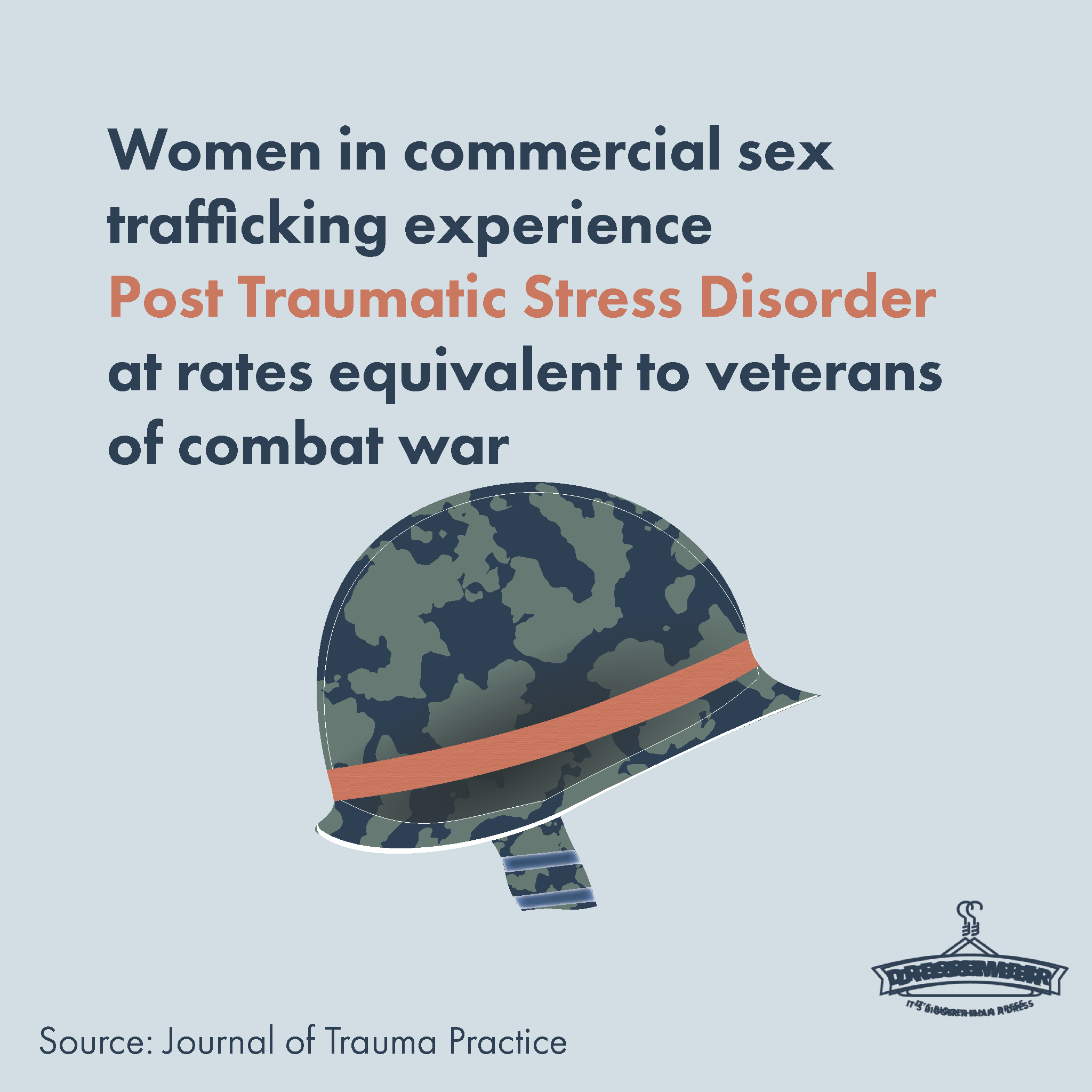What impact does sex trafficking have on survivors?
Dressember Reading Day #13
Every day during the month of December, we’re answering common questions and breaking down different aspects of human trafficking on our blog and Instagram. Join us in raising awareness about the injustice of human trafficking by sharing, donating, or joining the Dressember campaign (it’s not too late!).
According to the Journal of Trauma Practice, women in the sex industry experience Post-Traumatic Stress Disorder (PTSD) at rates equivalent to veterans of combat war.
What exactly is PTSD?
PTSD is defined as “a mental health condition that's triggered by a terrifying event — either experiencing it or witnessing it. Symptoms may include flashbacks, nightmares and severe anxiety, as well as uncontrollable thoughts about the event.”
Not all women in the commercial sex industry are victims of human trafficking, but when women are trafficked for sex through force, fraud, or coercion, their psychological and basic human needs are taken away. Because of this, victims and survivors of human trafficking often experience trauma that results in long-lasting psychological and physical symptoms.
What are some of the signs of PTSD?
Avoidant Behavior
When an individual experiences trauma, they usually either develop patterns of avoidance or patterns of intrusive memories and actions. If an individual develops patterns of avoidance, they plan their life so that they avoid anything that reminds them of the traumatic event. They work to isolate themselves so that they avoid triggers and post-traumatic stress. For example, if someone develops avoidant patterns, they may avoid the area where they experienced the trauma. They may become emotionally closed off and avoid talking about the trauma or that time in their life.
Rationalizing Trauma
If an individual develops intrusive memories and actions, their brain can’t stop thinking of the event. As a result, the individual works to rationalize the trauma. Sometimes the victim/survivor will want to learn as much about the trauma as possible. Other times, the individual will put themselves back into the trauma. If someone has experienced sexual trauma, they may wear revealing clothing, or they may cover up and wear very baggy clothes to hide any aspect of sexuality. The individual may also experience flashbacks and severe nightmares.
Remaining in Traumatic Situations
When women are trafficked for sex, they frequently develop trauma symptoms and a pattern of intrusive memories and actions. When this occurs, many women work to rationalize their experience. This is often done by putting themselves back into the trauma. Sometimes women feel ashamed. Other times, they have been abused and manipulated to believe that their traffickers love them. Even if a victim has the opportunity to leave, they may choose not to because of the level of abuse that they have endured. This results in women continuing to experience trauma and post-traumatic stress.
What can I do to help?
As a result, it is extremely important to continue our work with Dressember. When advocates raise money for rescue missions, aftercare kits, and freedom centers, victims are rescued and given the support and services they need.
Further Reading:
Psychiatry Advisory: “Human Trafficking Victims Have High Rates of PTSD, Depression”
Psychology Today: “Trauma: Childhood Sexual Abuse”
US Dept. of Veteran’s Affairs: Research on Women, Trauma, and PTSD
Megan Robbins is a recent college graduate. She received her bachelors degree in social work and she hopes to utilize her skills to serve others. When she is not a social worker, Megan loves to be creative through dancing and painting.



